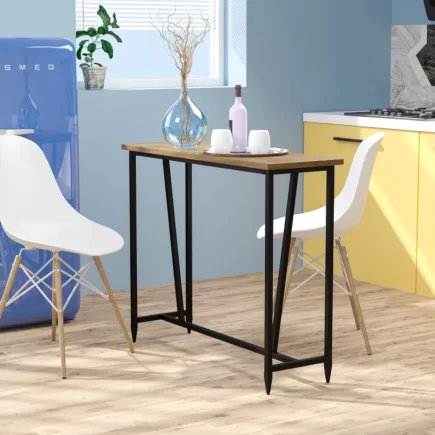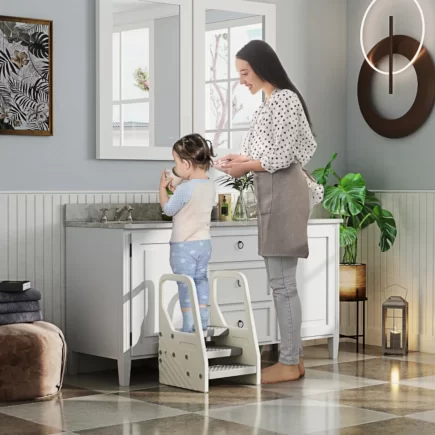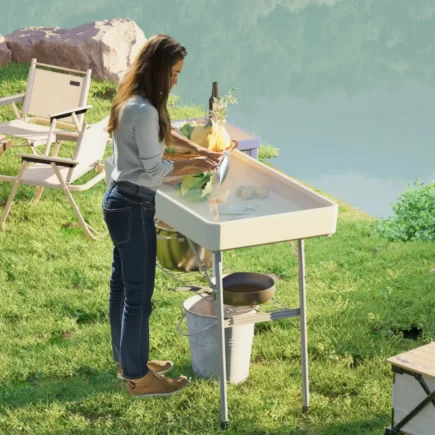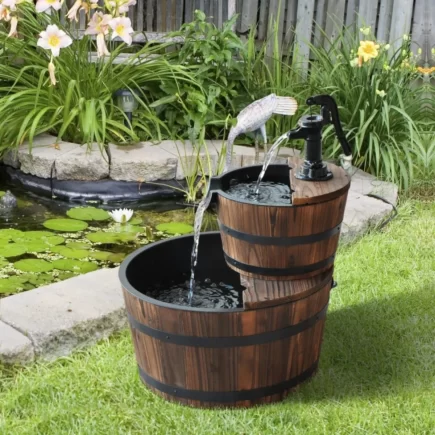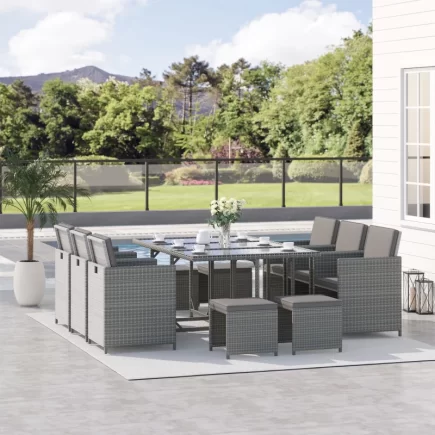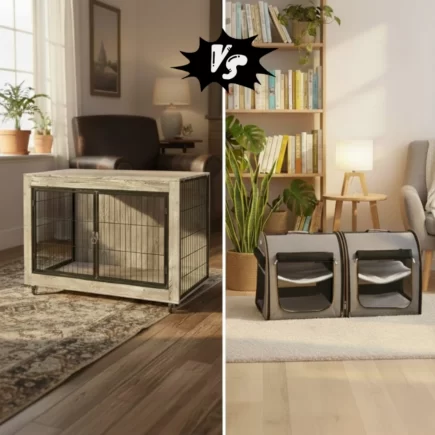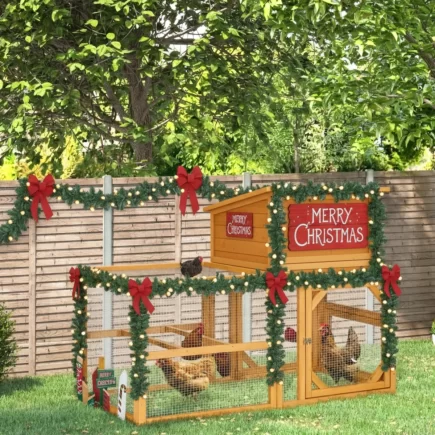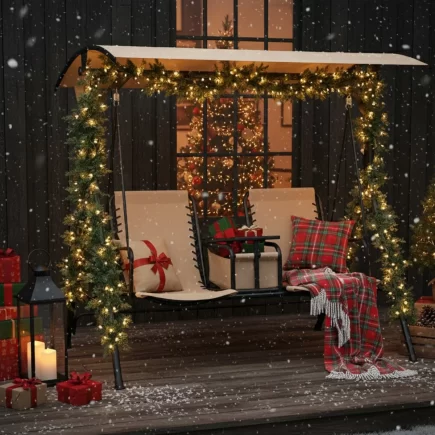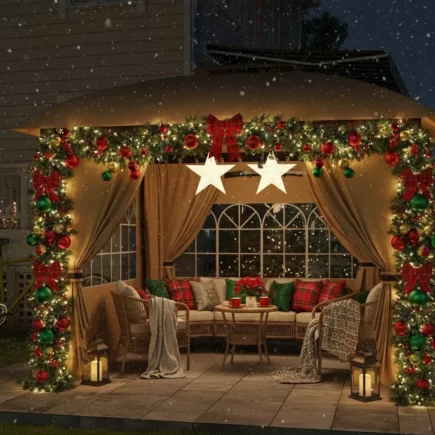When it comes to hosting an outdoor event, a canopy tent provides the perfect solution to protect your guests from the elements. However, as temperatures drop, especially during fall and winter months, ensuring that your guests stay warm and comfortable can become a challenge. To address this, you need to consider the most effective heating solutions to maintain a cozy environment inside your tent.

This article will guide you through advanced heating techniques to ensure optimal warmth, safety, and efficiency.
Choosing the Best Heater for Large Tents
The general rule of thumb for calculating the heating needs of a tent is:
- Measure the Tent Volume: Multiply the length, width, and height of the tent to get the cubic feet.
- Calculate Desired Temperature Increase: Determine the difference between the current outdoor temperature and the desired indoor temperature.
- Determine Heater BTU Requirement: Multiply the cubic feet by the number of BTUs required per cubic foot. This is typically around 4–5 BTUs per cubic foot of space.
The Right Size of Heater for Your Event Space
Additionally, consider the number of guests attending. More people will generate more heat, which may reduce the heating load needed.
Propane Heaters: Benefits and Safety Measures
Efficiency and Portability of Propane Models
Propane heaters are one of the most common choices for heating canopy tents due to their portability and efficiency. Propane can generate a high level of heat quickly, which is especially useful when temperatures drop drastically.
Benefits of propane heaters include:
- Portable: Easy to move and position around the tent.
- High Heat Output: Propane heaters can quickly raise the temperature, which is beneficial for outdoor events in colder weather.
- Cost-Effective: Propane is typically more affordable than electricity, making it ideal for events that last several hours or longer.

Safety Tips for Using Propane in Large Tents
While propane heaters are efficient, they also require careful use to ensure safety. Here are essential tips for using propane heaters in large tents:
- Proper Ventilation: Always ensure that the tent is properly ventilated to allow carbon monoxide (CO) to escape. Without adequate airflow, CO can accumulate, leading to dangerous conditions.
- Keep Heaters Away from Flammable Materials: Propane heaters generate significant heat, so place them away from fabrics, sidewalls, or other flammable materials.
- Monitor Propane Levels: Ensure the propane tank is securely attached and regularly check the tank’s fuel level.
Electric Heating Use For Canopy Tents
Electric heaters are a great option for medium to small tents where access to electricity is available. These heaters are safer than propane heaters because they do not produce harmful gases. They are compact, easy to set up, and typically require less maintenance.
Benefits of electric heaters include:
- Safety: No emissions or flammable gases are produced.
- Easy Setup: Simply plug them into an electrical outlet or generator.
- Cost-Effective for Smaller Tents: Ideal for smaller events where the tent is already close to a power source.

Electricity Needs
While electric heaters are easy to use, they can be expensive to run, particularly for larger spaces. The electrical requirements depend on the wattage of the heater and the size of the tent. It’s essential to check that your power source (whether it’s a generator or an electrical grid) can support the necessary load.
Infrared Heaters For Canopy Tents
Direct Heating Through Infrared Radiation
Infrared heaters are unique in that they heat objects directly rather than warming the air. This makes them highly energy-efficient, as no heat is wasted. Infrared heaters are perfect for heating specific areas inside a tent, such as where guests are seated.
The benefits of infrared heating include:
- Targeted Heating: Ideal for small gatherings where direct heat is needed in specific areas.
- Energy-Efficient: Infrared heaters warm objects, making them more efficient than traditional convection heaters.
- Minimal Draft: Since they don’t rely on air circulation, infrared heaters are perfect for windy outdoor conditions.
Caution:
Ensure infrared heaters are placed at least a few feet away from flammable materials like tent fabric or decorations. Follow manufacturer instructions for safe installation and use. Never leave heaters unattended, and monitor them regularly to avoid overheating. Proper ventilation is essential for safe operation.
Using Diffusers and Ducting Systems
How Diffusers Spread Heat from External Heaters
Diffusers and ducting systems are essential accessories for heating larger tents. They work by allowing a heater to be placed outside the tent while the warm air is directed inside. Diffusers help spread the warm air evenly throughout the space, preventing hot spots and ensuring a comfortable temperature.
When using a propane or diesel heater outside the tent, attach a diffuser to the ducting system. The diffuser will distribute the warm air along the tent floor, reducing the amount of space occupied by the heater and increasing safety.

The Efficiency of Ducting Systems in Large Setups
For larger tents, ducting systems are essential for ensuring the efficient distribution of heat. These systems allow heat to be channeled directly to areas where it is needed most. By using high-quality ducting, you can maintain a consistent temperature throughout the entire tent.
Insulation Techniques for Cold Weather
Insulation plays a key role in retaining heat inside a tent. Here are some techniques to enhance heat retention:
- Sidewalls: Installing sidewalls prevents warm air from escaping and protects the tent from wind.
- Reflective Floor Insulation: Adding thermal mats or insulated flooring helps trap heat inside the tent.
- Insulating Fabrics: Use heavy-duty fabrics or reflective materials on the tent’s walls and ceiling to retain warmth.
Maintenance of Heating Systems
Before using any heater, ensure that it is well-maintained. Check the propane tank, inspect electrical connections, and clean the heating units to prevent malfunction. Storing heaters properly during the off-season will also prolong their life and ensure they are ready for the next event.
Heating a canopy tent effectively requires understanding the different heating methods available, considering the size and requirements of your event, and prioritizing safety and efficiency.
By selecting the right heater and utilizing accessories like diffusers and insulation, you can ensure your guests stay warm and comfortable, regardless of the weather outside. At Aosom, we offer a wide range of canopy tents and heaters designed to make your outdoor event a success. Visit our Canopy Tents page to explore the best products for your next event
FAQs
1. How can I prevent my propane heater from running out of fuel during an event?
To avoid running out of propane during your event, make sure to monitor fuel levels and have extra propane tanks on hand. It’s also a good idea to use a tank with a gauge to track the remaining fuel. You can switch to a full tank before the event if necessary.
2. Is it safe to use a heater inside a canopy tent with sidewalls?
Yes, as long as you ensure proper ventilation to allow carbon monoxide to escape (in the case of propane heaters) and keep heaters at a safe distance from flammable materials. Installing sidewalls is beneficial for retaining heat but must be done carefully to maintain airflow.
3. Can a heater be used in a canopy tent for a multi-day event?
Yes, heaters can be used for multi-day events, but you should ensure that the heaters are rated for continuous use. Additionally, regular checks on fuel levels and electrical connections are essential for maintaining safety and performance over an extended period.

